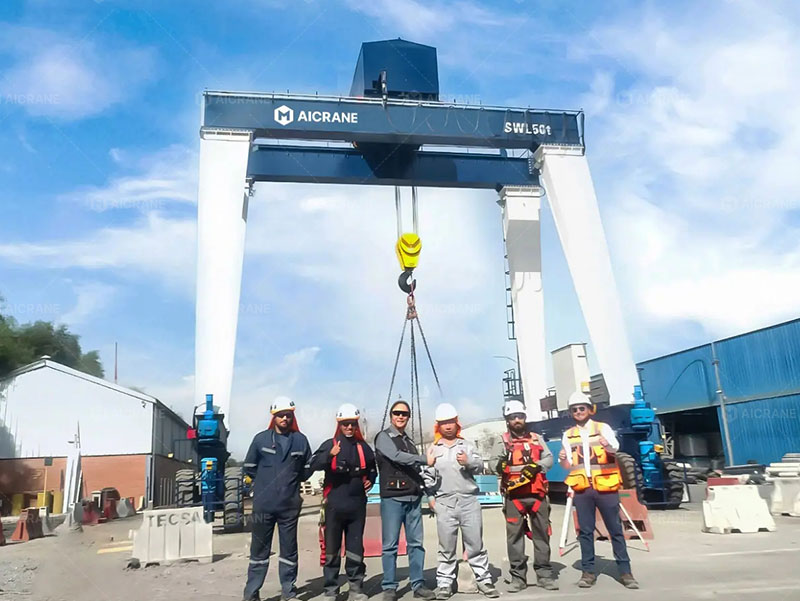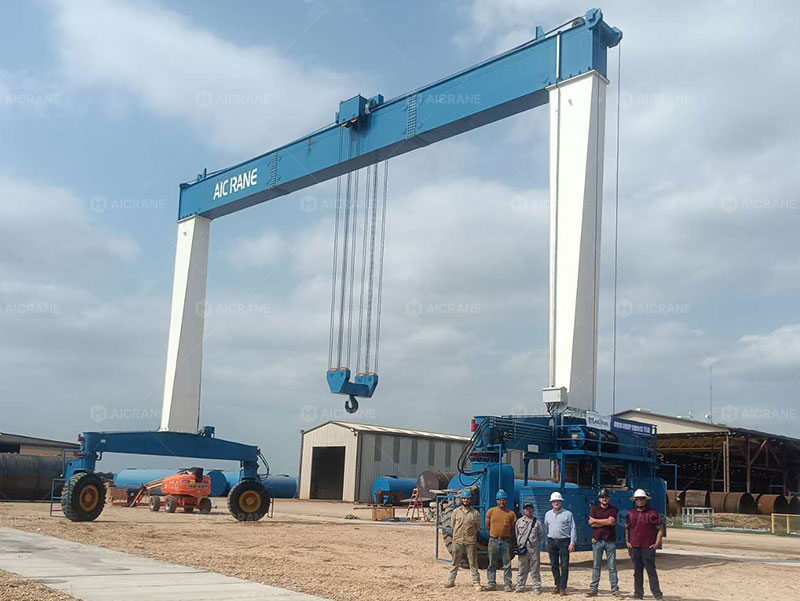In today’s fast-paced logistics, manufacturing, and port environments, efficiency and adaptability are key. Rubber Tyred Gantry (RTG) cranes are among the most versatile heavy-lifting solutions, offering mobility, flexibility, and high lifting capacities. However, to truly maximize their potential, an RTG crane must be tailored to match the unique requirements of your workflow. Customizing an RTG crane can improve productivity, reduce downtime, and optimize operational safety. In this article, we explore the key considerations and steps for customizing a rubber tyred gantry crane to suit your workflow.

Understanding Your Operational Needs
Before any customization, the first step is a thorough analysis of your operational requirements. Rubber tired gantry cranes are used across diverse industries—from container yards and warehouses to manufacturing facilities and marinas. The way you plan to use the crane will dictate its specifications, design features, and auxiliary equipment. Key questions to ask include:
-
What types of loads will the crane handle?
-
What is the maximum weight and size of these loads?
-
How often will the crane operate daily?
-
What are the spatial constraints in your facility?
-
Are there environmental factors, such as wind, dust, or corrosive conditions, to consider?
This step ensures that the crane’s design will be aligned with your workflow, avoiding over-engineering or underperformance.
Determining the Right Capacity and Span
The lifting capacity and span are fundamental parameters of any RTG crane. Customization begins with defining the maximum load your crane needs to handle and the distance between rails or operating points.
-
Lifting Capacity: Overestimating capacity may increase costs unnecessarily, while underestimating can compromise safety and efficiency. Consider both current and future load requirements.
-
Span and Width: The span should match your operational lanes and the width of the materials being moved. RTG cranes with adjustable spans can accommodate multiple lane configurations, enhancing versatility.
Custom engineering may also involve designing cranes with variable lifting heights to handle different container stacks or cargo types efficiently.

Choosing Mobility and Steering Options
One of the standout advantages of RTG cranes is their mobility. Unlike fixed cranes, RTG straddle cranes can traverse a yard or warehouse, reducing the need for multiple fixed cranes. When customizing mobility features, consider:
-
Steering Modes: RTG cranes can use hydraulic steering, mechanical steering, or advanced four-wheel independent steering. Each mode offers different levels of maneuverability, turning radius, and precision.
-
Power Source: Diesel-powered, hybrid, or fully electric RTG cranes are available. The choice depends on your environmental goals, operational hours, and fuel infrastructure.
-
Travel Speed: Customizing travel speed ensures the crane moves efficiently without compromising safety, particularly when operating in busy yards or tight indoor spaces.
Selecting the right mobility options is crucial to ensure that the RTG crane integrates seamlessly into your workflow without creating bottlenecks.
Optimizing Control Systems
Modern RTG cranes are equipped with advanced control systems, which can also be tailored for your operational needs. Customization here can significantly improve both efficiency and safety.
-
Operator Controls: Options include cab-operated systems, ground-based remote controls, or fully automated control systems. Each choice offers different advantages in terms of visibility, ergonomics, and operational flexibility.
-
Automation and Monitoring: High-end rubber wheeled gantry cranes can be equipped with sensors and monitoring systems that track load weight, crane position, and environmental conditions. This allows for predictive maintenance, collision avoidance, and real-time workflow optimization.
-
Software Integration: RTG cranes can be integrated with warehouse management systems (WMS) or terminal operating systems (TOS), enabling smoother coordination of crane operations with inventory and logistics management.
Custom control systems ensure that the crane not only handles your materials effectively but also fits seamlessly into your broader operational ecosystem.
Adapting to Environmental Conditions
Every facility comes with its environmental challenges, which should be addressed during customization. RTG cranes can be adapted to withstand:
-
Wind Loads: For outdoor operations, cranes can be designed with reinforced structures to resist high winds, maintaining safety and stability.
-
Corrosive Environments: Coastal or marine operations may require corrosion-resistant coatings and components.
-
Temperature Extremes: Cold or hot environments may necessitate specialized hydraulic fluids, insulation, or heating systems to ensure consistent performance.
-
Dust and Debris: Factories and container yards often generate dust, requiring sealed electrical components and robust filtration systems.
Tailoring the crane to environmental conditions ensures durability, reduces maintenance costs, and enhances long-term operational efficiency.
Customizing Safety Features
Safety is paramount in any crane operation. When customizing an RTG crane, safety features should be designed to match your workflow, operational risks, and regulatory requirements. Consider:
-
Anti-collision Systems: Prevents collisions with other cranes, structures, or vehicles.
-
Overload Protection: Prevents lifting beyond the crane’s rated capacity.
-
Emergency Stop Functions: Strategically positioned controls for rapid response in emergencies.
-
Lighting and Visibility: Proper lighting ensures operations can continue safely in low-light conditions.
Incorporating these safety features into the design phase rather than retrofitting later ensures optimal integration and reduces operational risk.
Tailoring Maintenance and Service Options
Customizing an RTG crane also involves planning for maintenance and service. A large mobile gantry crane tailored to your workflow should also be designed for ease of maintenance, minimizing downtime:
-
Accessibility: Ensure critical components are easy to access for inspections and repairs.
-
Predictive Maintenance Systems: Sensors can alert operators to potential issues before they cause downtime.
-
Spare Parts Management: Custom cranes can include components standardized for easier replacement or stocked locally for quick turnaround.
Proper planning for maintenance ensures that the customized RTG crane remains productive and cost-effective over its lifespan.
Conclusion: Matching RTG Cranes to Your Workflow
Customizing a rubber tyred gantry crane is not just about specifications – it’s about designing a solution that integrates seamlessly into your operations. From load capacity and span to steering modes, control systems, and environmental adaptations, every decision should reflect your workflow requirements. A well-customized RTG crane enhances efficiency, improves safety, and reduces operational costs, delivering maximum return on investment.
Whether you need an RTG crane for heavy-duty port operations, precise industrial handling, or specialized container movements, a tailored solution can make all the difference. By carefully analyzing your needs and collaborating with experienced manufacturers, you can design a crane that not only meets today’s demands but adapts to future operational challenges.
Invest in a rubber tyred gantry crane designed specifically for your workflow, and experience optimized productivity, safety, and flexibility.